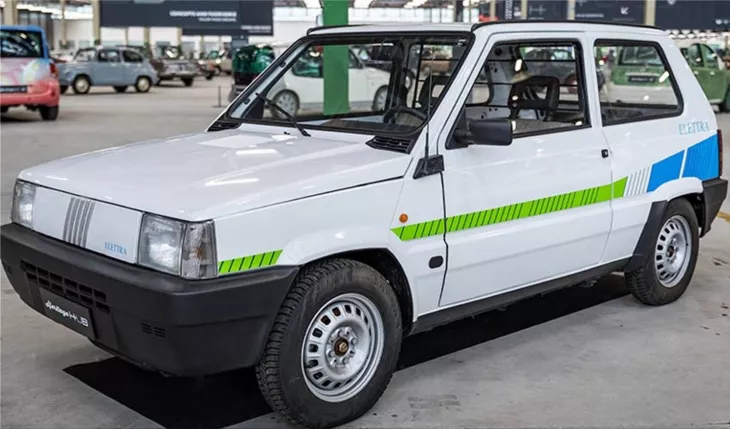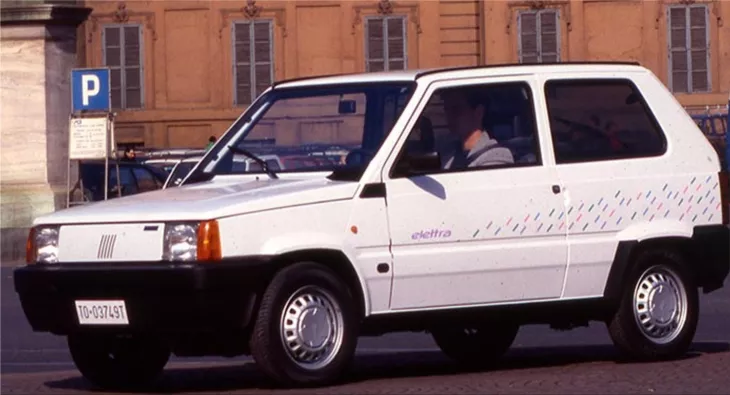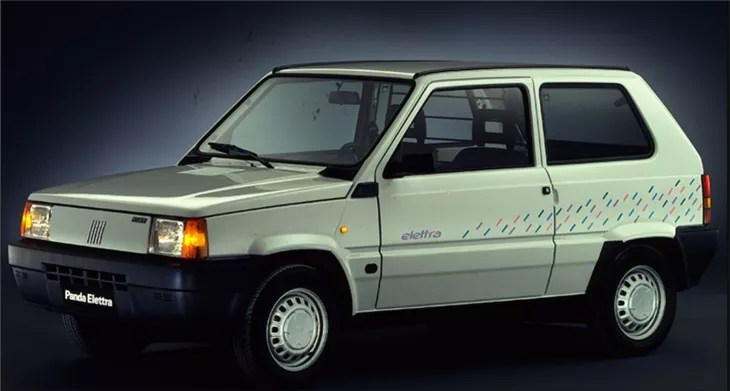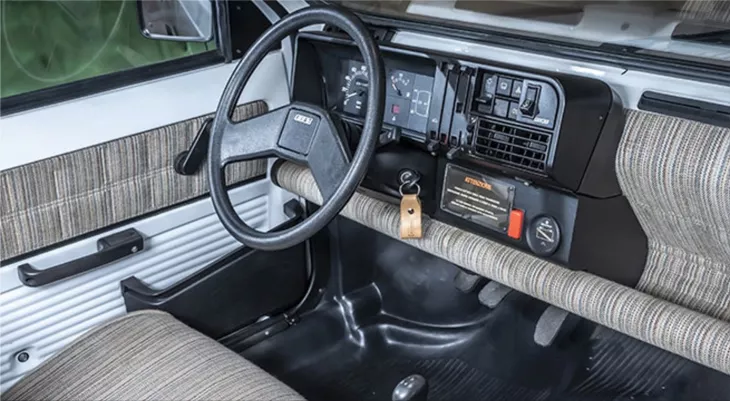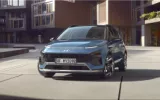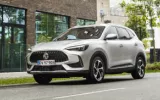When you think of an electric car brand, Tesla quickly comes to mind. And Elon Musk's company is the first dedicated exclusively to producing battery-powered vehicles. However, a major global manufacturer's first mass-produced electric car was not a Tesla but rather the Fiat Panda Elettra (1990).
We have to get on the time machine and go back to 1990. That was the year of "Un'estate Italiano" (an Italian Summer), the song composed by Gianna Nannini and Edoardo Bennato that filled with "Notti magiche" (magic nights) during the World Cup in Italy in '90. A championship without much emotion ended with Germany as champion after defeating Argentina with a penalty goal. The first title of an already unified Germany after the fall of the Wall a year earlier.
1990 was also the year of the end of a tragic and bloody decade in Italy, with multiple murders by the Sicilian mafia, Cosa Nostra, led by Salvatore Tot Riina, and which would continue in the following years, with the murders of judges Giovanni Falcone and Paolo Borsellino, both Sicilians from Palermo, in 1992. In addition, difficult years were accompanied by a political crisis that led to the Tangentopoli scandal and the restructuring of the Italian political system.
In that year of bomber jackets, baggy jeans, and white sneakers (what now? ), Italy put on the road a vehicle powered by an electric motor instead of a combustion engine. A car that did not pollute. This was a real revolution for the automotive sector, for the mobility of citizens, and especially for the care of the environment. And it was not just any car, but the most successful of the last decade.
Ten years earlier, the Fiat Panda was presented, designed by Giorgetto Giugiaro, and whose success was so overwhelming that it became the quintessential utility vehicle. The car most loved by Italians since the Fiat 500 electric car. To demonstrate its commitment to protecting the environment, the Italian brand decided to make a version of the popular utility powered by an electric motor. The result was the Fiat Panda Elettra electric car.
To do this, Fiat teamed up with the Austrian company Steyr-Puch and took the Panda CL as a basis. The 750 cc engine was replaced by another 9.2 kW (12 hp) direct current electric motor, which guaranteed high torque even at low revolutions. Electrical power was generated from twelve 6V lead-acid batteries: two are placed in the engine compartment, while the other ten is installed inside a robust steel container that occupies the base of the trunk.
In addition, compared to the gasoline Fiat Panda CL, the Fiat Elettra electric car is distinguished by the reinforced braking circuit, the different calibrations of the suspensions, and the increased tires. The fuel tank was kept to power a small heater connected to the heating system's radiator, which was also stored inside the engine compartment.
The transmission was via the Panda's conventional four-speed gearbox, complete with a clutch. Three maximum speed indicators were introduced in the speedometer for the first three speeds: 15, 25, and 40 km/h, respectively. However, it was possible to dispense with the change in the city and on the flat by always maintaining third gear, even for starts from a standstill, thanks to its high instantaneous torque.
The Fiat Panda Elettra could reach 70 km/h and from 0 to 40 km/h in 10 seconds and overcome slopes of up to 25%. With an average cruising speed of 50 km/h, the range was 100 km. In addition, the Panda Elettra had an automatic braking and descent energy recovery device.
The interior of the Fiat Elettra electric car underwent some modifications to accommodate the electrical system's architecture. The rear seats were removed, making the Panda a two-seater, while the front section remained unchanged. In the lower part of the instrument panel, an onboard computer provided information on the battery's state of charge.
The car was equipped as standard with an automatic charger, which completed the charge in approximately eight hours and could be connected to the standard domestic 220 V, 16 A socket. The equipment was completed with seats with headrests, seat belts with reels, and the rearview mirror on the right side.
In 1992, Fiat launched the second evolution of the Panda Elettra, with a more powerful engine reaching 24 hp and nickel-cadmium batteries that replaced the lead-acid batteries of the first series. The Fiat Panda Elettra 2 remained in production until 1998. The electric version of the Fiat Panda lasted eight years, the first battery-powered car produced in series by a manufacturer, several decades before Tesla appeared.





